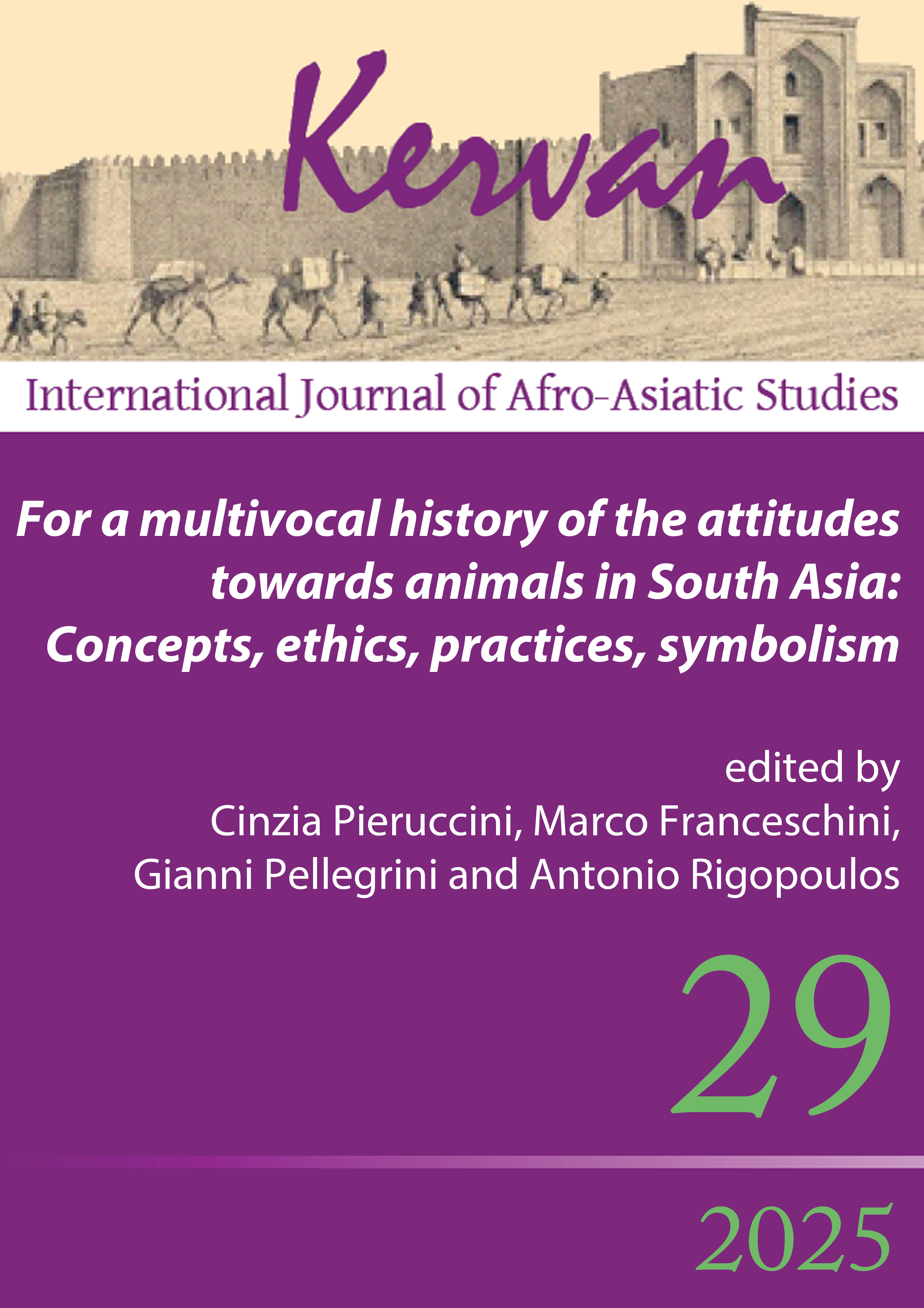Animals in the Shri Sai Satcharita
DOI:
https://doi.org/10.13135/1825-263X/12166Abstract
This essay documents the symbolic use of animals in one of the most popular Hindu hagiographies of modern times, i.e. the Shri Sai Satcharita or ‘The True Life of Lord Sai’ written by Govind Raghunath Dabholkar (1859–1929) and dedicated to the famous saint Sai Baba of Shirdi (d. 1918). Divided into fifty-one chapters (plus two additional ones, i.e. an epilogue and an epitome), the Shri Sai Satcharita is written in traditional ovī verse form and comprises more than 9,300 verses. Special attention is paid to those animals that recur most often and with whom Sai Baba and his devotees are identified. The significance of the Shri Sai Satcharita lies in the fact that it is a Hindu appropriation of an eclectic Sufi ascetic, part and parcel of Maharashtra’s integrative culture. This peculiar feature reflects itself even in its choice of animal symbolism. The essay is divided into six paragraphs: Introduction; Fundamental presuppositions in the Shri Sai Satcharita with regard to animals; Auspicious and inauspicious animals; Animals that are symbolically ambivalent; Identification of Sai Baba and his devotees with particular animals; The Islāmic element. Appendix 1 offers the complete list of animals present in the Shri Sai Satcharita, and Appendix 2 the number of their occurrences in descending order. Animal deities (such as Kamadhenu, the wish-fulfilling cow) and all deities and their animal vehicles (such as Sarasvati and her ‘swan,’ Ganesh and his mouse, etc.) have purposefully been omitted.
Downloads
Downloads
Published
Issue
Section
License
Gli autori che pubblicano su Kervan accettano le seguenti condizioni:
- Gli autori mantengono i diritti sulla loro opera e cedono alla rivista il diritto di prima pubblicazione dell'opera, contemporaneamente licenziata sotto una Licenza Creative Commons - Attribuzione che permette ad altri di condividere l'opera indicando la paternità intellettuale e la prima pubblicazione su questa rivista.
- Gli autori possono aderire ad altri accordi di licenza non esclusiva per la distribuzione della versione dell'opera pubblicata (es. depositarla in un archivio istituzionale o pubblicarla in una monografia), a patto di indicare che la prima pubblicazione è avvenuta su questa rivista.


 The articles that have appeared on Kervan since 2016 are rated as Class A in the system of National Scientific Qualification (ASN, disciplines 10/N1 and 10/N3).
The articles that have appeared on Kervan since 2016 are rated as Class A in the system of National Scientific Qualification (ASN, disciplines 10/N1 and 10/N3). The journal has been approved for inclusion in DOAJ. The DOAJ listing of the journal is available at
The journal has been approved for inclusion in DOAJ. The DOAJ listing of the journal is available at  The journal has been approved for inclusion in ERIH PLUS. The ERIH PLUS listing of the journal is available at
The journal has been approved for inclusion in ERIH PLUS. The ERIH PLUS listing of the journal is available at  Kervan was just accepted for indexing in SCOPUS. This important milestone ensures that articles published in Kervan are easily found when searching for library, archives and Information science and it enables Kervan authors to keep track of how often their article has been cited by others.
Kervan was just accepted for indexing in SCOPUS. This important milestone ensures that articles published in Kervan are easily found when searching for library, archives and Information science and it enables Kervan authors to keep track of how often their article has been cited by others.
